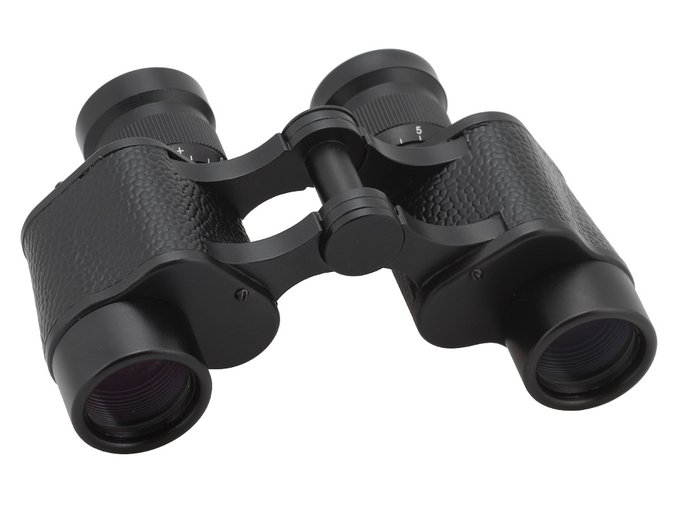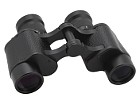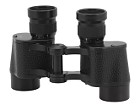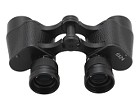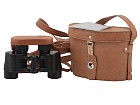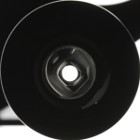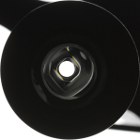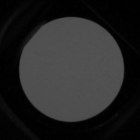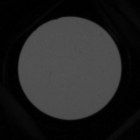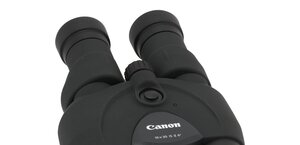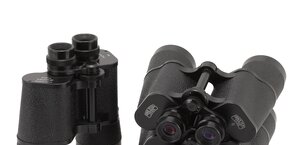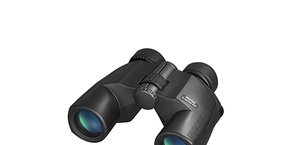Comet 6x24
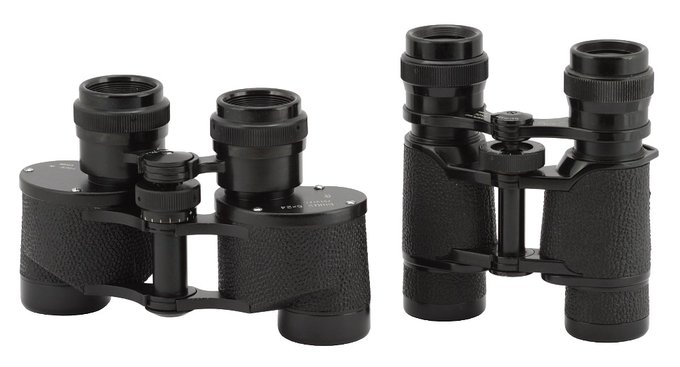 KOMZ 6x24 and Leitz Amplivid 6x24 |
Such binoculars as the Leitz Amplivid/Trinovid 6x24 or the KOMZ 6x24 would be perfect if only they were cheaper and more affordable. Many contemporary 6-6.5x30 mm models also aren’t fit for a child; for example the Levenhuk Sherman Pro 6.5x32 is too heavy, the Nikon Action EX 7x35 too heavy and too big and the field of view of the Vortex Raptor 6.5x32 is too narrow and its eyepieces too vulnerable for off-axis viewing.
For some time I’ve been observing internet auctions of Chinese producers with more and more interest, focusing on small and handy 6x24 Porro devices. One of them looked like a fake KOMZ 6X24 but I had to reject it. It was too heavy, weighing 520 grams.
The second one looked far more promising – small and handy, weighing just 368 grams, it also offered a quite large field of view amounting to 10.8 degrees. It means eyepieces with an apparent field of almost 65 degrees had to be employed. The eye relief distance of 13.5 mm was sensible and individual focusing, in spite of appearances, wasn’t a flaw. Firstly, with 6x magnification, the depth of field is quite significant. Secondly, children’s eyesight is far more flexible than the eyesight of an adult so the binoculars’ sharpness wouldn’t have to be adjusted almost at all. The price was another advantage – at less than 70 Euro the binoculars was very affordable and it came with a case made of leather, a rainguard, and a strap in the box. Some sellers can ask that much for just used accessories taken from old European binoculars. So, for a price of an old leather case you get a set of binoculars plus accessories – brand new. The offer was too attractive to miss so I decided to take a risk and import the device. Was it a hit or a miss?
| Magnification | Lens diameter | Angular field of view | Prisms | Eye relief | Weight | Price |
|---|---|---|---|---|---|---|
| 6 | 24 | 190/1000(10.8o) | BaK-4/Porro | 13.5 mm | 368 g | 250 PLN |
Summary
Pros:
- small, shapely and classic casing,
- genuine leather accessories in the box,
- good quality prisms made of BaK-4 glass,
- moderate brightness loss on the edge of the field of view,
- antireflection coatings covering all air-to-glass surfaces.
Cons:
- field of view noticeably narrower than declared,
- different antireflection coatings in both optical paths,
- lack of darkening inside the tubes so weak performance against bright light,
- uneven performance of individual focusing,
- different sharpness near the edge of the field for particular eyepieces,
- distinct coma,
- noticeable chromatic aberration.
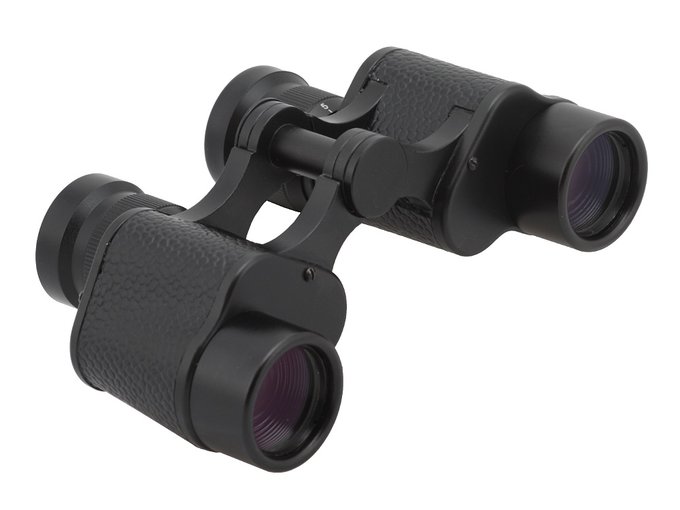 |
The binoculars look very nice and seem to be rather solid. Indeed, they are small and physically light. Still a closer look reveals that the quality control in the factory that produced them is non-existent. The coatings differ in colour distinctly in every eyepiece; that’s why the transmission graph, presented below, we had to divide into two optical paths. Fortunately the results are roughly the same.
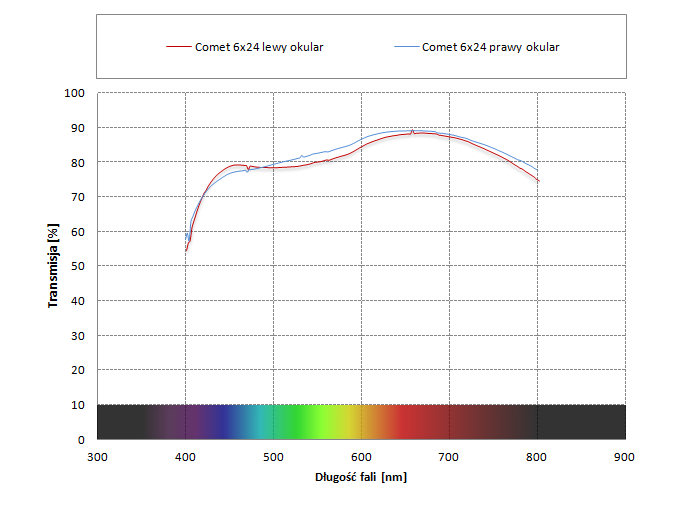 |
The coatings’ quality in itself is not especially high. If in a Porro device with classic, achromat objectives and typical eyepieces the transmission in the centre of the visual spectrum amounts to about 80% it is not an impressive result.
Producers somehow didn’t know that the edges of elements and the interior of the binoculars should be darkened. Accordingly you see raw, shiny aluminum inside… Areas next to exit pupils and performance against bright light leave a lot to be desired as a result.
If you look through the binoculars you notice at once that the field of view was stated incorrectly. It seems it is definitely closer to 9 degrees than to the declared value of almost 11 degrees. What’s more, in one eyepiece the edge blur is definitely larger than in the other one.
My conclusions? Lax quality control at this price point is only to be expected but the field of view, narrower by almost two degrees, makes this model simply unfit for children. If you happen to go to China and can choose among several dozen of specimens perhaps you’ll be lucky enough to find a model worth buying. Importing that piece of equipment, even for 70 Euro, is a huge risk – your money can be wasted.
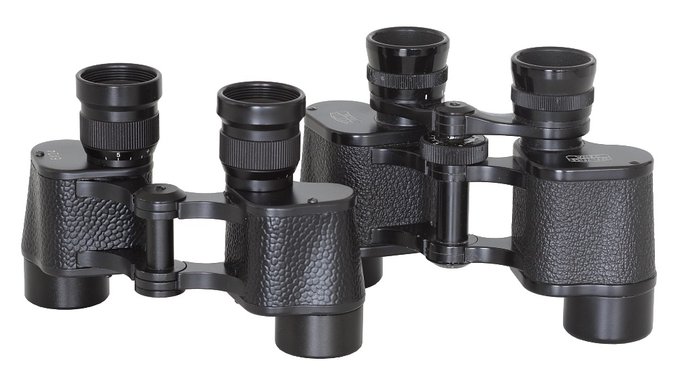 Comet 6x24 and Carl Zeiss Jena Sportur 6x24 |




